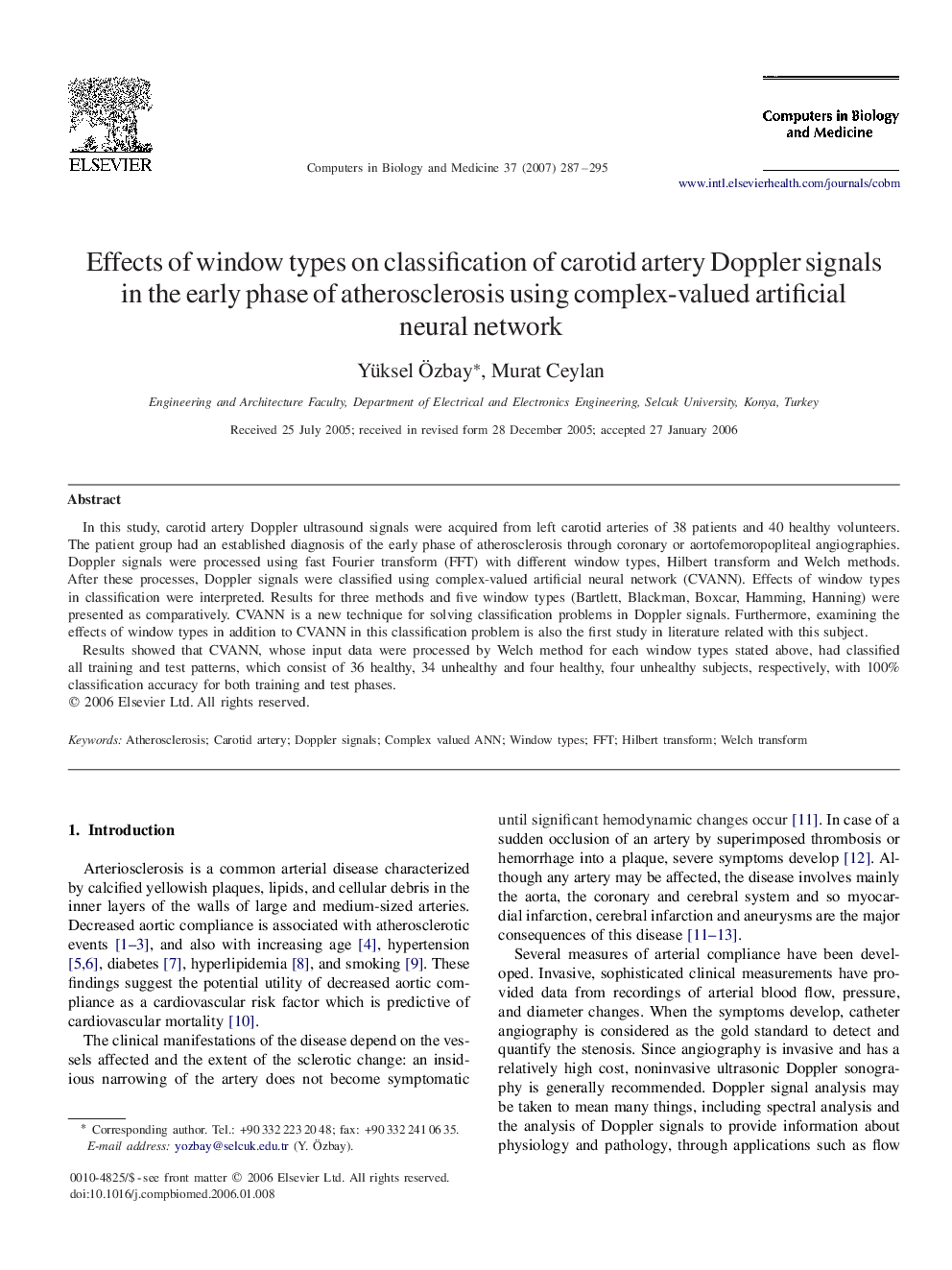| Article ID | Journal | Published Year | Pages | File Type |
|---|---|---|---|---|
| 506168 | Computers in Biology and Medicine | 2007 | 9 Pages |
In this study, carotid artery Doppler ultrasound signals were acquired from left carotid arteries of 38 patients and 40 healthy volunteers. The patient group had an established diagnosis of the early phase of atherosclerosis through coronary or aortofemoropopliteal angiographies. Doppler signals were processed using fast Fourier transform (FFT) with different window types, Hilbert transform and Welch methods. After these processes, Doppler signals were classified using complex-valued artificial neural network (CVANN). Effects of window types in classification were interpreted. Results for three methods and five window types (Bartlett, Blackman, Boxcar, Hamming, Hanning) were presented as comparatively. CVANN is a new technique for solving classification problems in Doppler signals. Furthermore, examining the effects of window types in addition to CVANN in this classification problem is also the first study in literature related with this subject.Results showed that CVANN, whose input data were processed by Welch method for each window types stated above, had classified all training and test patterns, which consist of 36 healthy, 34 unhealthy and four healthy, four unhealthy subjects, respectively, with 100% classification accuracy for both training and test phases.
